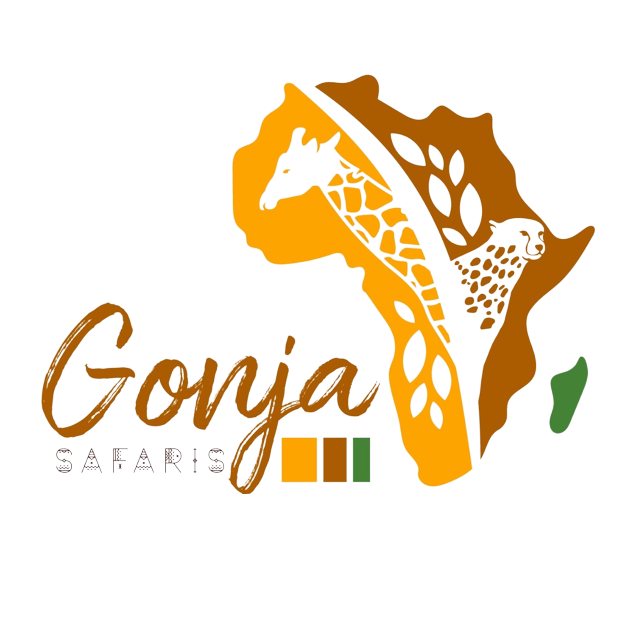Question Coffee Café Rwanda is renowned for producing some of the finest coffee beans in…

Mount Kilimanjaro Climbing Adventure in Tanzania
The hike up Kilimanjaro doesn’t require technical skills and is thus doable by both first-time adventurers and experienced hikers. Considering you don’t need mountaineering equipment such as rope, harness, crampons, ice axe, etc., it is more of walking up than a mountaineering excursion.
Standing at 5,895 meters (19,341 feet) above sea level, Kilimanjaro is our planet’s tallest free-standing mountain, and also Africa’s tallest, with a peak that rises past cloud level.
Formed as a result of volcanic eruptions, Kilimanjaro has three volcanic cones namely, Kibo, Mawenzi, and Shira. Of these, Kibo is the tallest and hosts Uhuru Peak, the highest summit of the mountain. On the other hand, Mawenzi is adored for offering eye-catching views of the Rongai and Northern Circuit routes.
Unlike MawenziKibo is no longer a peak having collapsed at a time it was 16,000 feet. This resulted in the creation Shira Plateau as located on the mountain’s western side, the location of Shira, Lemosho, and Machame routes.
As expected of a stratovolcano, Kilimanjaro is largely made up of volcanic ash, lava, and rock. While Shira and Mawenzi are extinct volcanoes, Kibo is a dormant volcano that isn’t cut off from the supply of lava. As such, it could still erupt sometime in the far future.
The last major eruption that the mountain experienced occurred 360,000 years back, and the most recent activity was 200,000 years back. If you have extra time, you can pursue a hike around it. While at it, you will be greeted by the smell of sulfur from the volcano’s lava.
The minimum age for climbing Kilimanjaro is 10 years old, but the park authority grants exceptions to children who have significant experience trekking. It has been climbed by a 6-year-old before. It was American, Coaltan Tanner, who summited at age six in 2018.
In terms of weather, the conditions here are relatively stable for much of the year. The foot of the mountain experiences a tropical to semi-temperate, while the lower plains are hot and dry, on the other hand, the rainforest conditions become increasingly warm and humid. The higher you go, the colder and drier it becomes, and the fewer the plants and animals you encounter. This is something you will start to notice as you get past the heath and alpine desert zones. At the summit, you will mostly find ice and rock.
Best time to climb Kilimanjaro
The dry months from December to mid-March and mid-June to the end of October offer a better hiking experience compared to the wet months in between.
The hike up Kilimanjaro doesn’t require technical skills and is thus doable by both first-time adventurers and experienced hikers. Considering you don’t need mountaineering equipment such as rope, harness, crampons, ice axe, etc., it is more of walking up than a mountaineering excursion.
Standing at 5,895 meters (19,341 feet) above sea level, Kilimanjaro is our planet’s tallest free-standing mountain, and also Africa’s tallest, with a peak that rises past cloud level.
Formed as a result of volcanic eruptions, Kilimanjaro has three volcanic cones namely, Kibo, Mawenzi, and Shira. Of these, Kibo is the tallest and hosts Uhuru Peak, the highest summit of the mountain. On the other hand, Mawenzi is adored for offering eye-catching views of the Rongai and Northern Circuit routes.
Unlike MawenziKibo is no longer a peak having collapsed at a time it was 16,000 feet. This resulted in the creation Shira Plateau as located on the mountain’s western side, the location of Shira, Lemosho, and Machame routes.
As expected of a stratovolcano, Kilimanjaro is largely made up of volcanic ash, lava, and rock. While Shira and Mawenzi are extinct volcanoes, Kibo is a dormant volcano that isn’t cut off from the supply of lava. As such, it could still erupt sometime in the far future.
The last major eruption that the mountain experienced occurred 360,000 years back, and the most recent activity was 200,000 years back. If you have extra time, you can pursue a hike around it. While at it, you will be greeted by the smell of sulfur from the volcano’s lava.
The minimum age for climbing Kilimanjaro is 10 years old, but the park authority grants exceptions to children who have significant experience trekking. It has been climbed by a 6-year-old before. It was American, Coaltan Tanner, who summited at age six in 2018.
In terms of weather, the conditions here are relatively stable for much of the year. The foot of the mountain experiences a tropical to semi-temperate, while the lower plains are hot and dry, on the other hand, the rainforest conditions become increasingly warm and humid. The higher you go, the colder and drier it becomes, and the fewer the plants and animals you encounter. This is something you will start to notice as you get past the heath and alpine desert zones. At the summit, you will mostly find ice and rock.
Best time to climb Kilimanjaro
The dry months from December to mid-March and mid-June to the end of October offer a better hiking experience compared to the wet months in between.



